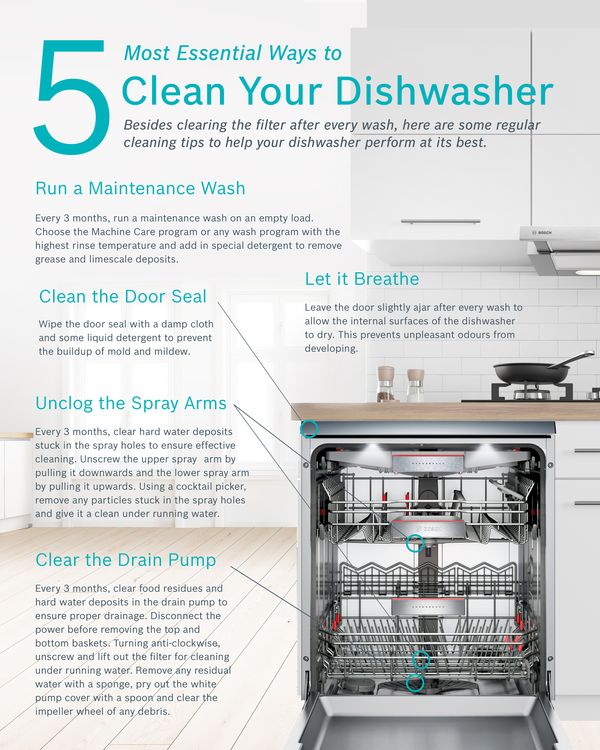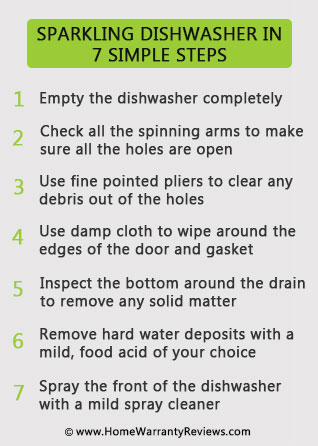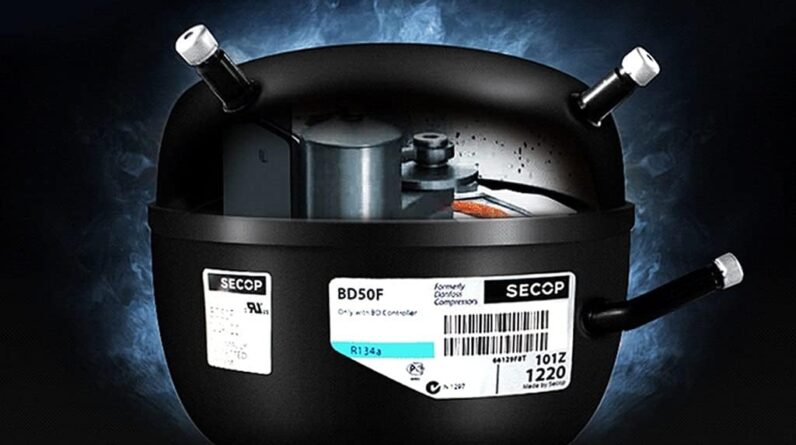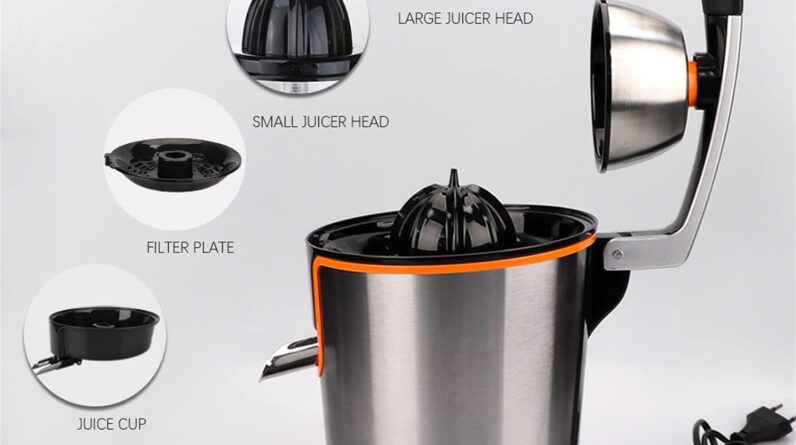
Maintaining and cleaning the interior of a dishwasher is crucial to ensure its efficient performance and prolong its lifespan. In this article, you will discover simple yet effective tips on how to keep your dishwasher in top shape. From removing debris and cleaning the filter to tackling stubborn stains and eliminating unpleasant odors, these helpful suggestions will have your dishwasher sparkling clean and ready for the next load of dishes.

This image is property of assets.searshomeservices.com.
Regular Cleaning
Load and Unload Dishes Properly
One of the key aspects of maintaining a clean dishwasher is to ensure that you load and unload the dishes properly. Make sure to arrange the dishes in a way that allows water to reach all surfaces, allowing for effective cleaning. Similarly, when unloading, take care to remove any remaining food scraps or debris.
Scrape Off Excess Food
Before placing your dishes in the dishwasher, it is important to scrape off any excess food. This will prevent clogs in the dishwasher’s drainage system and ensure that your dishes come out clean after each cycle. Investing in a good quality food scraper or using a pre-rinse can greatly help in this regard.
Use Dishwasher-Safe Cleaners
To keep your dishwasher in good condition, always use cleaners that are specifically formulated for dishwasher use. Using regular dish soap or household cleaning agents can damage the dishwasher’s components and lead to malfunctions. Look for dishwasher-safe cleaners that are designed to remove stains, odors, and buildup.
Clean the Filter
The dishwasher filter is responsible for trapping food particles and preventing them from clogging the drain. Regularly cleaning the filter will improve the dishwasher’s efficiency and prevent unpleasant odors from developing. Refer to your dishwasher’s user manual to locate and clean the filter properly.
Wipe Down the Interior
After each cycle, take a few moments to wipe down the interior of your dishwasher. This will remove any remaining residue, water spots, or stains that may have accumulated. Use a damp cloth or sponge with a mild detergent to wipe the walls, racks, and other surfaces. This simple step will keep your dishwasher looking clean and fresh.
Deep Cleaning
Remove and Soak Dish Racks
Over time, dish racks can accumulate grease, food residue, and mineral deposits. To remove these stubborn stains and buildup, it is recommended to remove the dish racks and soak them in a mixture of warm water and dish soap. Scrub gently using a soft brush or sponge to restore their cleanliness and functionality.
Check and Clean Spray Arms
The spray arms in your dishwasher play a vital role in distributing water evenly and effectively. However, they can often become clogged with food debris or mineral deposits. Regularly inspect the spray arms and remove any obstructions using a toothpick or small brush. This will ensure that the water jets are not hindered and allow for optimal cleaning.
Clean the Door Gasket
The door gasket, or seal, is responsible for creating a watertight seal when the dishwasher is in use. However, it can accumulate dirt, food particles, and mold over time. Clean the gasket using a sponge or cloth soaked in a mixture of warm water and mild detergent. Be sure to thoroughly dry the gasket to prevent mold growth.
Unclog Drainage Holes
The drainage holes at the bottom of the dishwasher can sometimes become clogged with debris. This can lead to poor drainage and even unpleasant odors. Take a moment to inspect the drainage holes and use a toothpick or small brush to gently remove any blockages. This will ensure smooth drainage and prevent potential issues.
Run an Empty Cycle with Vinegar
To give your dishwasher a thorough deep clean, run an empty cycle with vinegar. Fill a cup or bowl with white vinegar and place it on the top rack of the dishwasher. Then, run a hot water cycle. The vinegar will help to remove mineral deposits, odors, and bacteria, leaving your dishwasher fresh and clean.

This image is property of media3.bosch-home.com.
Preventing Odors
Avoid Using Excessive Detergent
Using too much detergent in your dishwasher can create excessive suds, which can lead to unpleasant odors. Follow the manufacturer’s recommendations for detergent usage and avoid overfilling the detergent dispenser. Using a high-quality detergent and using the correct amount will prevent residues that can cause foul smells.
Clean the Seal and Edges
The rubber seal around the dishwasher door can accumulate food particles, debris, and mold if not cleaned regularly. Wipe down the seal using a damp cloth or sponge soaked in a mixture of warm water and mild detergent. Pay attention to the edges and corners where buildup is more likely to occur. Regular cleaning will prevent odor-causing bacteria from thriving.
Leave the Door Open
After running a cycle, it is important to leave the dishwasher door open for a while to allow moisture to evaporate. This will prevent the growth of mold and mildew, which can lead to unpleasant odors. Allowing fresh air to circulate inside the dishwasher will keep it dry and odor-free.
Remove Wet Dishes Promptly
Leaving wet dishes sitting in the dishwasher for an extended period can create a breeding ground for bacteria and mold. Aim to remove the dishes promptly after the cycle is complete to prevent any moisture buildup. Additionally, drying the dishes with a towel can help to eliminate any remaining moisture and prevent odor formation.
Run a Freshening Cycle
Some dishwashers offer a freshening or sanitizing cycle specifically designed to eliminate odors. Check your dishwasher’s user manual to determine if this feature is available. Running a freshening cycle periodically will help to maintain a fresh and clean-smelling dishwasher interior.
Maintaining the Dishwasher
Inspect and Clean the Water Inlet Valve
The water inlet valve is responsible for supplying water to the dishwasher during the wash cycle. Over time, it can become clogged with mineral deposits or debris, leading to reduced water flow and ineffective cleaning. Inspect the water inlet valve periodically and clean it as necessary using a soft brush or toothbrush.
Check the Spray Arm Bearings
The bearings of the spray arms ensure smooth rotation and proper water distribution. If the bearings become worn or damaged, the spray arms may not function optimally. Check the spray arm bearings regularly and replace them if necessary. This will help to maintain the dishwasher’s performance and ensure sparkling clean dishes.
Ensure Proper Dishwasher Leveling
Proper leveling of the dishwasher is essential for its optimal performance. If the dishwasher is not leveled correctly, it can cause leaks, poor cleaning results, and noisy operation. Check the leveling of your dishwasher periodically and adjust the feet as needed to ensure stability and proper functioning.
Clean the Control Panel
The control panel of your dishwasher is exposed to dirt, spills, and grease during regular use. Wipe down the control panel regularly using a soft, damp cloth or sponge. Avoid using abrasive cleaners or excessive moisture, as this can damage the control panel. Keeping the control panel clean will enhance the overall appearance of your dishwasher.
Regularly Maintain the Exterior
While focusing on the interior of your dishwasher is important, it is also essential to maintain the exterior. Wipe down the exterior surfaces with a mild detergent and warm water regularly. Pay special attention to any buttons, handles, or displays. This will prevent the buildup of dirt and grime, keeping your dishwasher looking clean and presentable.

This image is property of hips.hearstapps.com.
Handling Tough Stains and Deposits
Use a Dishwasher-Safe Stain Remover
Sometimes, stubborn stains or deposits may form in your dishwasher that regular cleaning methods cannot remove. In such cases, consider using a dishwasher-safe stain remover specifically designed for dishwashers. Follow the instructions provided with the product to effectively tackle tough stains and deposits.
Remove Hard Water Deposits
Hard water can leave mineral deposits on the interior surfaces of your dishwasher over time. To remove these deposits, create a paste using equal parts vinegar and baking soda. Apply the paste to the affected areas, such as the walls and racks, and gently scrub using a soft brush or sponge. Rinse thoroughly with water to reveal a clean and sparkling interior.
Utilize Citric Acid
Citric acid is a natural cleaning agent that can effectively remove stains, mineral deposits, and odors from the dishwasher. Dissolve a few tablespoons of citric acid in warm water and pour it into the bottom of the empty dishwasher. Run a hot water cycle to allow the citric acid to work its magic. This method will leave your dishwasher fresh and free from stubborn stains and deposits.
Address Rust Stains
Rust stains can be a common occurrence in older dishwashers or if metal objects come into contact with the interior racks. To address these stains, make a paste using equal parts lemon juice and salt or cream of tartar. Apply the paste to the rust stains and let it sit for a few minutes. Scrub gently with a soft brush or sponge until the stains are removed. Rinse thoroughly with water.
Consider Professional Help
In some cases, tough stains and deposits may require professional intervention. If you have tried various cleaning methods without success, it may be time to consult a professional dishwasher repair service. They have the expertise and specialized equipment to tackle even the most challenging stains and deposits, ensuring your dishwasher remains in optimal condition.
Dealing with Sensor Malfunction
Check Sensor for Blockage
If your dishwasher has sensors that detect water levels, temperature, or soil levels, it is important to keep them clean and free from blockages. Check the sensor area for any debris or buildup and gently remove it using a soft brush or cloth. Clearing any obstructions will allow the sensors to function properly and ensure accurate cycle performance.
Clean the Sensor
Over time, sensors in your dishwasher can become dirty or coated with residue, affecting their accuracy. Use a soft cloth or sponge dampened with warm water to gently clean the sensors. Avoid using abrasive materials or harsh chemicals that could damage the sensors. Keeping the sensors clean will help maintain the dishwasher’s efficiency.
Replace Faulty Sensor
If you have tried cleaning the sensors and they continue to malfunction, it may be necessary to replace the faulty sensor. Contact a professional dishwasher repair service to diagnose the issue and recommend the appropriate replacement part for your specific dishwasher model.
Reset the Dishwasher
Sometimes, a simple reset can resolve minor sensor malfunctions. Refer to your dishwasher’s user manual for instructions on how to perform a reset. Typically, this involves pressing a combination of buttons or switches in a specific order. Resetting the dishwasher can often restore proper sensor functionality.
Contact Customer Support
If you have exhausted all troubleshooting options and your dishwasher’s sensors still do not function correctly, it is best to contact the manufacturer’s customer support service. They will be able to provide guidance and support specific to your dishwasher model and help resolve any sensor-related issues.

This image is property of media-cldnry.s-nbcnews.com.
Extending the Lifespan of Your Dishwasher
Avoid Overloading the Dishwasher
While it may be tempting to maximize each load, overloading the dishwasher can lead to decreased performance and potential damage to the dishwasher’s components. Follow the manufacturer’s recommendations for load sizes and avoid packing dishes too tightly. This will ensure that water and detergent can circulate freely, resulting in cleaner dishes and a longer lifespan for your dishwasher.
Use the Correct Cycle
Different dishwashers offer a variety of wash cycle options to accommodate different load types and soil levels. Using the correct cycle for each load can help maintain the dishwasher’s efficiency and prevent unnecessary wear and tear. Refer to your dishwasher’s user manual to familiarize yourself with the available cycle options and their intended uses.
Regularly Inspect the Hoses
The hoses that supply water to your dishwasher should be periodically inspected for signs of wear, leaks, or blockages. Look for cracks, bulges, or loose connections. If any issues are detected, replace the hoses promptly to prevent potential water damage and ensure a smooth water supply to the dishwasher.
Clean the Spray Arms
The spray arms play a crucial role in the dishwasher’s cleaning process by spraying water onto the dishes. However, they can become clogged with food debris or mineral deposits, affecting their performance. To maintain the spray arms, remove them from the dishwasher and rinse them under running water. Use a toothpick or small brush to dislodge any stubborn debris from the spray arm nozzles. Regular maintenance of the spray arms will enhance the dishwasher’s cleaning capabilities.
Ensure Proper Ventilation
Proper ventilation is important for both the dishwasher’s performance and the longevity of its internal components. Check that the dishwasher is not surrounded by objects that obstruct the airflow. Additionally, ensure that the dishwasher’s ventilation grille is not blocked by any debris or dust. Adequate ventilation will prevent overheating and help maintain the dishwasher’s lifespan.
Additional Tips and Tricks
Run a Vinegar Rinse Cycle
In addition to regular cleaning, running a vinegar rinse cycle once a month can help to remove any lingering odors and keep your dishwasher fresh. Simply place a cup of white vinegar on the top rack and run a hot water cycle without any dishes. The vinegar will help break down any deposits and eliminate odors, leaving your dishwasher smelling clean.
Maintain the Dishwasher’s Heating Element
The heating element in your dishwasher helps to dry the dishes and sanitize them during the wash cycle. Over time, mineral deposits can build up on the heating element, reducing its efficiency. To maintain the heating element, run a cycle with a dishwasher-safe descaler or citric acid to remove any mineral deposits. This will ensure that your dishwasher continues to provide optimal drying and sanitizing performance.
Use a Dishwasher-Safe Descaler
If your area has hard water, mineral deposits can accumulate in your dishwasher, affecting its performance and causing damage over time. Using a dishwasher-safe descaler can help remove these deposits and ensure the dishwasher operates at its best. Follow the instructions on the descaler product for proper usage and frequency.
Avoid Dishwasher Tablets with Wax Seal
Some dishwasher tablets have a wax seal to help with ease of use and measuring. However, the wax can accumulate in the dishwasher and lead to problems, such as clogged filters or spray arms. To prevent these issues, opt for dishwasher tablets without a wax seal or use dishwasher detergent in powdered or liquid form.
Remove and Clean the Float Switch
The float switch in your dishwasher is responsible for monitoring the water level and preventing overflows. Over time, debris or residue can accumulate around the float switch, affecting its functionality. Regularly remove the float switch, rinse it with warm water, and clean any debris or residue. This will ensure that the float switch operates properly, preventing water damage and maintaining the dishwasher’s functionality.

This image is property of www.homewarrantyreviews.com.
When to Seek Professional Assistance
Persistent Blockages or Clogs
If you consistently encounter blockages or clogs in your dishwasher, despite regular cleaning and maintenance, it may be time to seek professional assistance. A professional dishwasher technician can diagnose the root cause of the blockages and provide solutions to ensure optimal dishwasher performance.
Continued Malfunctioning
If your dishwasher continues to malfunction, such as not starting, not completing cycles, or not cleaning dishes effectively, it is best to consult a professional. Continued malfunctioning may indicate more complex issues with internal components that require professional repair or replacement.
Major Leaks or Water Damage
Major leaks or water damage in or around your dishwasher should not be ignored. This may indicate a problem with the plumbing connections or internal components of the dishwasher. Contact a professional dishwasher repair service immediately to prevent further damage and ensure a safe operating environment.
Electrical or Control Panel Issues
If you experience electrical problems, such as sparks, burning smells, or control panel malfunctions, it is crucial to seek professional help. These issues can be hazardous and should be addressed by a qualified technician to ensure the safety of your dishwasher and your home.
Unusual Noises or Vibrations
Unusual noises or excessive vibrations during the operation of your dishwasher could be a sign of underlying issues. These issues may range from loose components to faulty motors or pumps. It is advisable to consult a professional dishwasher technician to diagnose and address these problems.
Safety Precautions
Turn Off Power Before Maintenance
Before performing any maintenance procedures on your dishwasher, always ensure that the power supply is turned off. This will minimize the risk of electrocution or injury. Locate the dishwasher’s circuit breaker in your home’s main electrical panel and switch it off before working on the dishwasher.
Wear Protective Gloves
When cleaning or maintaining your dishwasher, it is recommended to wear protective gloves. This will protect your hands from hot water, cleaning agents, and any sharp edges or debris that may be present in the dishwasher.
Avoid Mixing Cleaning Products
Mixing different cleaning products, especially those containing bleach and ammonia, can create toxic fumes. Always read the labels of the cleaning products you use and avoid mixing them together. Following the manufacturer’s instructions will ensure a safe and effective cleaning process.
Keep Children and Pets Away
To ensure the safety of children and pets, it is important to keep them away from the dishwasher during maintenance and cleaning. Children may accidentally turn on or tamper with the dishwasher, leading to potential hazards. Keep them at a safe distance until the maintenance or cleaning process is complete.
Follow Manufacturer’s Instructions
Always refer to the manufacturer’s instructions for your specific dishwasher model when performing any maintenance or cleaning tasks. Each dishwasher may have unique features or requirements that need to be followed for safe and effective maintenance. Familiarize yourself with the instructions provided to ensure the longevity and proper functioning of your dishwasher.
By following these tips and maintaining a regular cleaning routine, you can keep your dishwasher in excellent condition. Not only will this ensure that your dishes come out sparkling clean, but it will also extend the lifespan of your dishwasher, saving you money in the long run. With a little effort and care, your dishwasher will continue to be a dependable and efficient kitchen companion for years to come.





